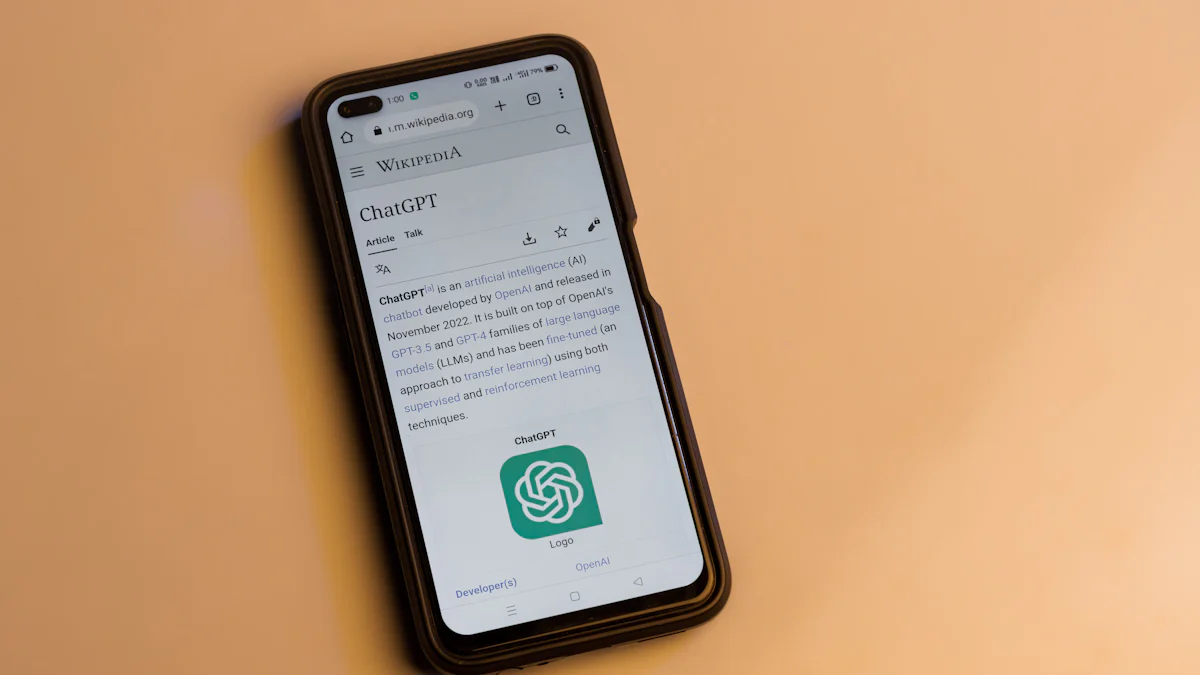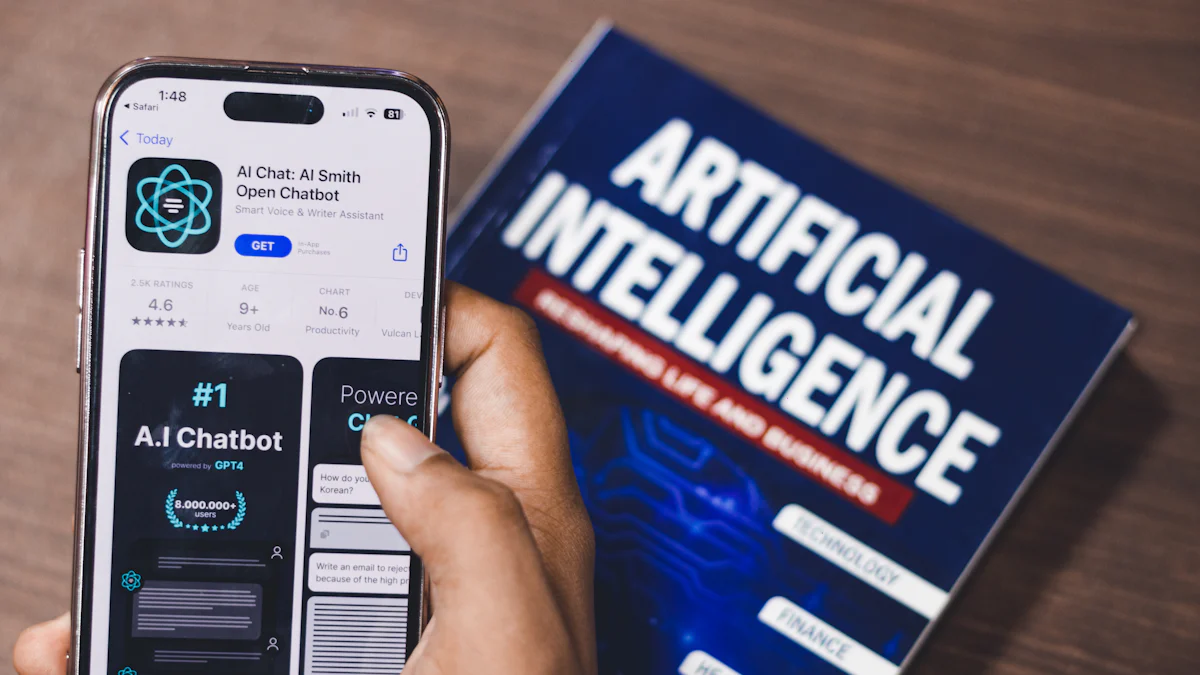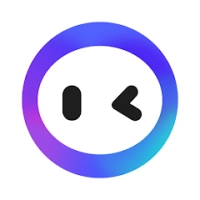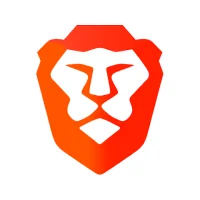How AI-powered chatbots are transforming customer service apps
37 min read AI-powered chatbots are advanced tools designed to simulate human-like conversations. They rely on technologies like natural language processing (NLP), machine learning, and conversational AI to understand and respond to customer queries.written by Alex Carter, Content Creator February 18, 2024 20:12
Image Source: pexels
AI-powered chatbots are changing how you experience customer service. These tools provide instant responses, making support faster and more accessible. Nearly half of U.S. adults interacted with chatbots last year, and 44% of companies plan to adopt them within two years. Businesses also save money by using chatbots. For example, Gartner predicts an $80 billion reduction in labor costs by 2026. With their ability to handle repetitive tasks efficiently, chatbots allow companies to focus on delivering better service while keeping costs low.
Key Takeaways
- AI chatbots reply quickly, making customer service faster and better.
- They customize chats using user likes, boosting happiness and trust.
- Companies save money with chatbots by cutting worker and training costs.
- Chatbots do simple tasks, letting people handle harder problems.
- Even with benefits, chatbots may fail with tough questions, needing human help.
The Role of AI-powered Chatbots in Customer Service
Defining AI-powered Chatbots
AI-powered chatbots are advanced tools designed to simulate human-like conversations. They rely on technologies like natural language processing (NLP), machine learning, and conversational AI to understand and respond to customer queries. These chatbots analyze text or voice inputs to deliver accurate and contextually relevant answers. Unlike traditional systems, they continuously improve through feedback and data analysis, making them smarter over time.
At their core, AI-powered chatbots serve as a single point of contact for customer support. They operate 24/7, providing real-time assistance without delays. For example, when you ask a chatbot about a product return policy, it instantly retrieves the information and guides you through the process. This efficiency ensures that your questions are answered promptly, even during peak hours.
The technology behind these chatbots includes several key components:
These components work together to create seamless and engaging customer experiences.
Why AI-powered Chatbots are Essential for Customer Service
How AI is Transforming Mobile Apps in 2025
AI-powered chatbots are revolutionizing customer service by efficiently tackling common challenges. They can manage large volumes of inquiries at once, providing instant responses without delays. Unlike human agents, these chatbots deliver consistent answers, enhancing trust and reliability in customer interactions.
Customers today expect fast, personalized support. AI-powered chatbots meet this demand by tailoring responses based on your preferences and past interactions. For instance, if you frequently ask about shipping updates, the chatbot prioritizes this information in future conversations. This personalization enhances satisfaction and loyalty.
Additionally, these chatbots act as the first point of contact, managing initial queries and repetitive tasks. This allows human agents to focus on complex issues, improving overall efficiency. Businesses also benefit from reduced costs, as chatbots require minimal maintenance compared to hiring and training staff.
Key Benefits of AI-powered Chatbots in Customer Service Apps

Image Source: pexels
Enhancing Efficiency and Speed
AI-powered chatbots significantly improve the efficiency of customer service. They resolve issues 18% faster than traditional methods, ensuring you get the help you need without delays. These chatbots also achieve a 71% successful resolution rate, which means most of your queries are handled effectively on the first attempt. Websites using chatbots even report a 23% increase in conversion rates, showing how speed and efficiency can directly impact business success.
Metrics like self-service rate and performance rate measure how well chatbots perform. For example, the self-service rate tracks how often users solve their issues without needing further assistance. The performance rate evaluates how many correct answers the chatbot provides during active sessions. These metrics highlight how chatbots streamline operations while maintaining high-quality service.
By handling repetitive tasks and providing instant responses, chatbots allow human agents to focus on more complex issues, further enhancing overall efficiency.
Delivering Personalization and Boosting Customer Satisfaction
AI-powered chatbots excel at delivering personalized experiences. They analyze your preferences and behavior to offer tailored recommendations. For instance, if you frequently shop for electronics, the chatbot might suggest related products or promotions. This level of personalization not only makes your experience more enjoyable but also increases your likelihood of making a purchase.
These chatbots use advanced algorithms and machine learning to learn from previous interactions. They create detailed customer profiles, enabling them to provide real-time assistance that feels human-like. For example, chatbots can detect your emotions and intent, adjusting their responses to match your mood. This personalized approach boosts customer satisfaction and fosters loyalty.
Studies show that 61% of consumers prefer faster replies from AI over waiting for a human agent. Additionally, 68% appreciate the quickness of chatbot responses, and 44% find them helpful for gathering product information before making a purchase. These statistics highlight how personalization and speed work together to enhance your overall experience.
Reducing Costs for Businesses
AI-powered chatbots offer a cost-effective solution for businesses. They reduce the need for full-time agents, cutting labor costs significantly. Training expenses also decrease by 70%, as chatbots require minimal setup compared to human employees. Operational overhead drops by up to 90%, making chatbots an attractive option for companies looking to optimize their budgets.
Chatbots also handle 2-3 times more inquiries than human agents, allowing businesses to scale their operations without hiring additional staff. This efficiency translates to better service for you while keeping costs low for companies. By automating routine tasks, chatbots free up resources that can be invested in improving other areas of customer service.
Challenges and Limitations of AI-powered Chatbots
Handling Complex Customer Queries
AI-powered chatbots excel at handling simple and repetitive tasks, but they often struggle with complex customer queries. These challenges arise due to several factors:
- Knowledge base shortcomings: Chatbots rely on pre-programmed data. When faced with unique or intricate problems, they may fail to provide accurate or helpful responses.
- Inability to think critically: Unlike humans, chatbots cannot analyze complex situations or consider multiple perspectives. This limitation often results in overly simplistic answers.
- Lack of empathy: Chatbots cannot replicate human emotional intelligence. This makes it difficult for them to connect with you during sensitive or emotionally charged interactions.
For example, if you encounter a technical issue requiring creative problem-solving, a chatbot might offer generic suggestions that fail to address your specific needs. Studies show that over 75% of customers using chatbots eventually require human assistance for such issues. Additionally, 60% of consumers believe chatbots do not answer queries accurately, which can lead to frustration and dissatisfaction.
These limitations highlight the importance of balancing chatbot use with human support. While chatbots can handle routine tasks efficiently, human agents remain essential for resolving complex problems and providing a personal touch.
Addressing Privacy and Data Security Concerns
AI-powered chatbots collect and process vast amounts of user data, raising significant privacy and security concerns. Common risks include:
- Data exposure: Cyberattacks and breaches can compromise sensitive information.
- Lack of transparency: Many users feel they have limited control over how their data is used.
- Data misuse: Collected data may be used for targeted advertising or profiling without your consent.
These concerns contribute to distrust in chatbot systems. For instance, fears of identity theft and unauthorized data sharing make users hesitant to share personal information. To address these issues, businesses must adopt robust security measures. Regular security audits, data encryption, and multi-factor authentication can protect your information. Clear privacy policies and explicit user consent further enhance trust.
By prioritizing data security and maintaining transparency, companies can mitigate risks and ensure that chatbots remain a reliable tool for customer service.
Real-world Applications of AI-powered Chatbots

Image Source: pexels
Success Stories of Businesses Using AI-powered Chatbots
AI-powered chatbots have transformed customer service across various industries. Many businesses have achieved remarkable results by integrating these tools into their operations. Here are some notable success stories:
These examples highlight how chatbots can improve efficiency, boost customer satisfaction, and drive business growth. For instance, Sephora’s chatbot uses personalization to engage users, while Domino’s simplifies the ordering process, leading to increased customer loyalty. Similarly, Bank of America’s Erica demonstrates how chatbots can handle high volumes of requests, reducing operational costs and improving service quality.
Industries Leveraging AI-powered Chatbots
AI-powered chatbots have found applications in a wide range of industries. Each sector uses these tools to address specific challenges and improve customer experiences. Here’s a closer look:
In retail, chatbots assist with product recommendations and order tracking, creating a seamless shopping experience. In healthcare, they help patients schedule appointments and access medical advice. The banking sector uses chatbots to provide instant financial guidance, while the education industry leverages them to answer student queries and share resources. These examples show how chatbots adapt to the unique needs of each industry, driving innovation and improving service delivery.
Tip: If you’re in any of these industries, adopting AI-powered chatbots can help you stay competitive and meet evolving customer expectations.
AI-powered chatbots are reshaping customer service by delivering faster, more personalized, and cost-effective solutions. They provide instant responses, handle repetitive queries, and ensure 24/7 availability, which enhances customer satisfaction and loyalty. Businesses benefit from reduced costs and improved scalability, as chatbots resolve tickets 18% faster and achieve a 71% success rate. While challenges like handling complex queries remain, advancements in natural language processing and sentiment analysis promise even smarter and more empathetic chatbots. Their ability to streamline operations and meet rising customer expectations makes them essential for modern businesses.
FAQ
What are AI-powered chatbots?
AI-powered chatbots are software programs that simulate human conversations. They use technologies like natural language processing and machine learning to understand and respond to your questions. These chatbots can handle tasks like answering FAQs, providing recommendations, and assisting with transactions.
How do AI-powered chatbots improve customer service?
AI-powered chatbots provide instant responses, ensuring you get help without waiting. They handle repetitive tasks, allowing human agents to focus on complex issues. By personalizing interactions based on your preferences, they enhance your experience and satisfaction.
Are AI-powered chatbots secure?
Yes, most AI-powered chatbots use encryption and authentication to protect your data. However, businesses must ensure regular security updates and transparent privacy policies. Always check how your data is being used before sharing sensitive information.
Can chatbots replace human customer service agents?
Chatbots handle simple and repetitive tasks efficiently, but they cannot replace human agents entirely. For complex or emotional issues, human support remains essential. Chatbots and human agents work together to provide the best customer service experience.
What industries benefit the most from AI-powered chatbots?
Industries like retail, banking, healthcare, and travel benefit greatly. For example, chatbots in retail assist with product recommendations, while in healthcare, they help schedule appointments. Each industry uses chatbots to improve efficiency and customer satisfaction.



















